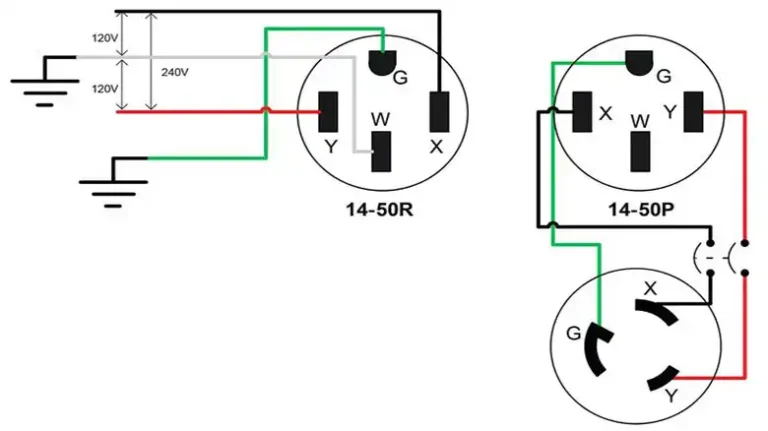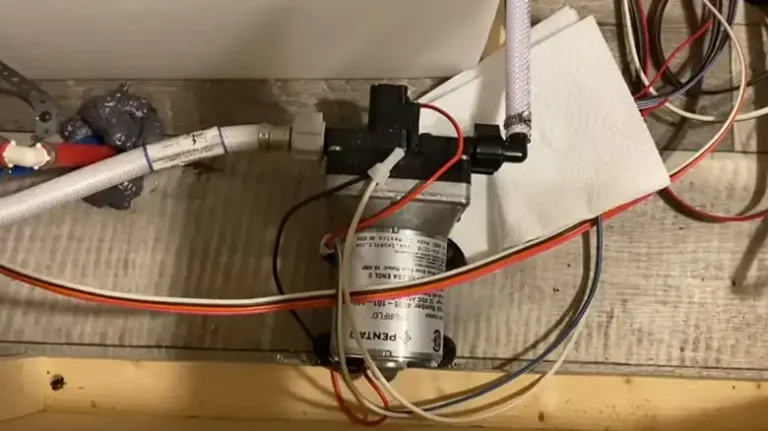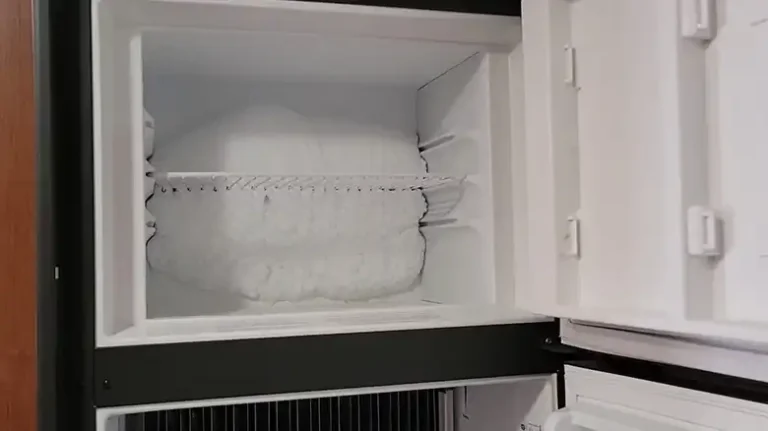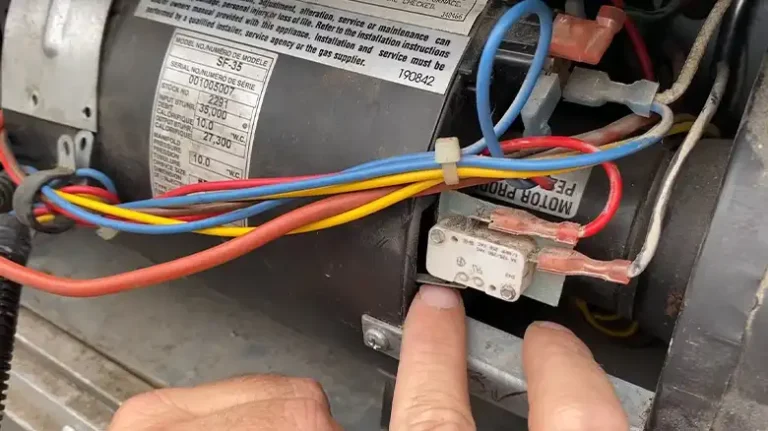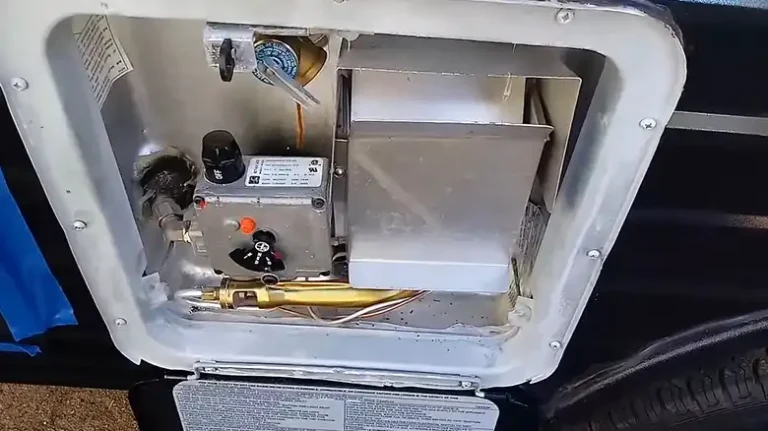Norcold RV Fridge Not Working on Electric: What’s Happening!
Few things are worse than opening your Norcold refrigerator on a hot summer day and being blasted with warm, stale air. No cold drinks or frozen snacks to be found, just a big metal box of disappointment. You had powered up the RV, flipped on the fridge switch, and waited for the chilled air to flow. But something isn’t right.
Peering behind the fridge, you confirm your fears – the compressor is silent and unmoving in the electric mode that should be cooling your food. Yet you know the fridge works fine in LP gas mode, creating cold air with the trusty propane flame. Why won’t it operate on shore power like it’s designed to?
Most RV refrigerator electric operation failures can be fixed with systematic troubleshooting and a few replacement parts. This guide will walk you through the common causes, troubleshooting steps, and maintenance tips to get your Norcold running cold again on electricity. Have patience, grab your tools, and let’s bring chilly temperatures back to your RV fridge!
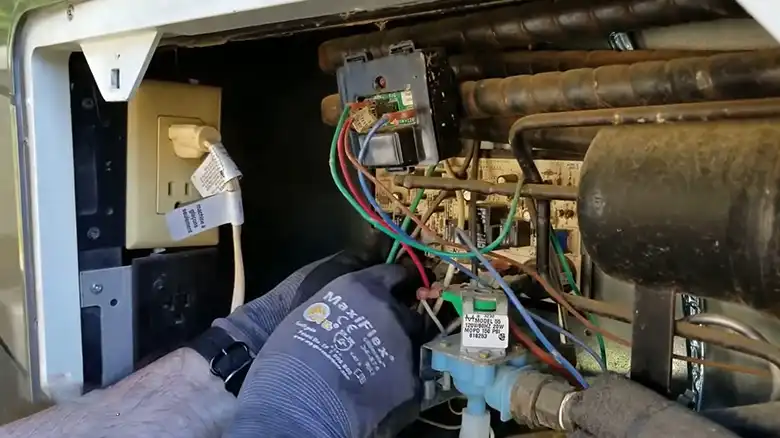
How to Troubleshoot a Norcold RV Fridge When It’s Not Working on Electric
As you already know, Norcold refrigerators are designed to run on both propane gas and 120V AC electricity. The propane system uses a burner to heat ammonia gas, which circulates through coils to absorb heat from the fridge interior. On the other hand, the electric system uses a compressor and fan to cool and circulate the refrigerant through the coils. The fridge can switch between electric and propane automatically depending on power source availability.
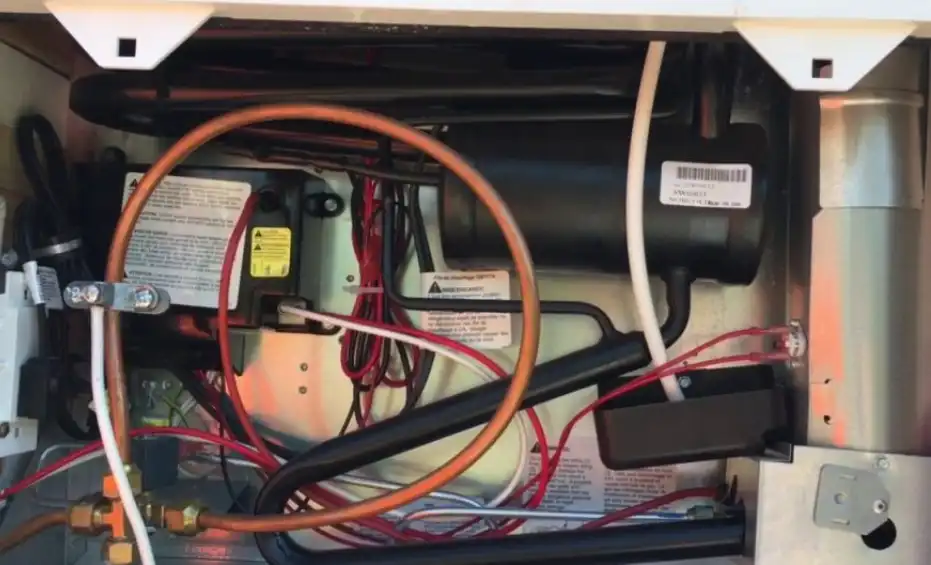
Source: rvcampgear
Now that the fridge isn’t functioning on electricity, follow these steps thoroughly to diagnose and fix this issue –
Step 1: Verify Power Source
a) For shore power, check the condition of the cord, plug condition, and outlet amperage rating. Verify campground breakers are not tripped. Use a multimeter to check voltage. Should be 108-132VAC.
b) For the generator, check the condition of the hookup cord and terminations. Verify generator has adequate fuel and starts properly. Use a multimeter to verify the 120V AC output voltage before connecting to the RV.
c) For batteries, use a multimeter to check voltage at battery terminals. Check voltage again at fridge power inlet with fridge turned on. Voltage should be 12VDC or higher.
Step 2: Inspect All Fuses and Breakers
a) Locate the fusebox and identify the fuse that powers the fridge AC circuit. Check continuity with a multimeter or visually inspect for blown filament.
b) For DC fuses, locate the main RV fusebox and find the fridge fuse. Check continuity. Also, check the DC fuse in the refrigerator power board.
c) Find and reset the AC breaker for the fridge. If the breaker continues tripping, high resistance in the circuit is likely.
Step 3: Check Control Panel settings
a) Verify the power switch is ON. Toggle the switch off and on.
b) Check mode is set to AUTO to allow auto source switching.
c) Ensure the thermostat is calling for cooling and set below interior temp.
Step 4: Thoroughly Inspect Wiring
a) Unplug the shore power cord and use a multimeter to check prong resistance end-to-end. Check for shorts to ground.
b) Remove the exterior fridge access panel and inspect the wiring from terminations to power boards. Look for chafed insulation, and signs of overheating.
c) Check ground wire connections. Clean and tighten as needed.
Step 5: Assess inverter performance
a) Use a multimeter to check the inverter 120VAC input voltage. Should match shoreline/generator voltage.
b) Verify 12VDC input voltage to inverter while fridge on. Check output voltage, should be 12VDC.
c) Load test inverter by turning on interior lights. Output voltage should not drop more than 5%.
Step 6: Check Control Board Error Codes
a) Locate the control board and identify the error light or code display if present.
b) Consult the manufacturer’s service manual for a diagnostic flow chart. Follow the steps to isolate the issue.
Step 7: Test Thermistor Resistance
a) Locate the thermistor probe in the refrigerator compartment.
b) Disconnect wires from the thermistor and use a multimeter to check resistance. Consult resistance chart.
c) Faulty thermistor resistance indicates replacement is needed.
Step 8: Ensure Temperature Sensors Are Okay
a) Locate the temperature sensors inside the refrigerator compartment. These sensors are crucial for accurately gauging the internal temperature.
b) Carefully inspect the sensor wiring for any signs of damage, wear, or corrosion. Ensure the connections are secure.
c) Use a multimeter to check the resistance of the temperature sensors. Refer to the manufacturer’s specifications for the correct resistance values.
d) If the resistance readings are outside the specified range or inconsistent, consider replacing the temperature sensors.
Step 9: Check the Propane Tank
a) Confirm that your RV’s propane tank has an adequate supply of propane. Check the tank gauge or use other methods to assess the propane levels.
b) Inspect the propane tank and supply lines for any leaks. A soapy water solution applied to the connections can help identify escaping propane through the formation of bubbles.
c) Ensure the propane regulator is functioning correctly. If you detect any issues or suspect a malfunction, consult a professional for further inspection and possible replacement.
d) Verify that the propane burner inside the fridge is clean and free from obstructions. Any debris or blockages can hinder the proper operation of the propane system.
e) If the propane system appears to be in good condition but the fridge still doesn’t work in electric mode, proceed with the previous troubleshooting steps to pinpoint the issue.
Possible Causes of Electric Operation Failure
From troubleshooting countless Norcold fridges, I’ve narrowed down the most common causes of electric operation failure –
A. Power Supply Issues
- Faulty shore power connection: Loose plug, tripped breaker, inadequate outlet amperage.
- Generator malfunction: Improper hookup, overload, dead battery.
- Blown fuse/tripped breaker: Check both AC and DC fuses.
- Low battery: Check the RV battery voltage. Should be 12V+ when the fridge is on electric.
B. Refrigerator Electrical Issues
- Power switch in OFF position. Make sure it’s ON.
- Faulty control board. Responsible for switching power sources.
- Thermistor failure. Measures interior temp and signals for cooling.
- Bad inverter. Must be working to convert AC to DC.
C. Wiring Problems
- Loose wire connections. Check interior wiring and external hookup.
- Damaged power cord. Inspect the entire length for cuts, frays, and cracks.
- Faulty terminations. Loose or corroded wires at junction points.
Things You Should Consider While DIY Troubleshooting
When troubleshooting a Norcold RV fridge yourself, the most important things to keep in mind are –
Follow safety precautions when working with electrical components; reference the manufacturer’s technical manuals for wiring diagrams and error codes; start with simple checks like power sources, fuses, and connections before more complex testing; use the proper tools like a multimeter to take diagnostic measurements; research common issues on RV forums to have an informed approach; methodically work through troubleshooting steps without skipping over potential causes; and know when to call in a professional technician for complex repairs like control board replacement.
Taking these considerations into account will allow you to carry out safe, effective DIY troubleshooting and get your Norcold refrigerator working again.
Preventative Maintenance Tips
Beyond troubleshooting electrical issues, there are ways to prevent problems –
Maintain clean condenser coils for proper ventilation. Use a surge protector when on shore power to avoid voltage spikes. Limit opening the fridge to retain cold air. Ensure the fridge is level when parked. Have fridge serviced annually by a Norcold-certified tech.
When to Call a Professional
While I hope these troubleshooting steps get your Norcold fridge running on electricity again, some issues require a professional –
a) If the control board needs replacement or resets don’t work.
b) The inverter tests faulty and needs replacement.
c) Any errors that occur during thermistor resistance testing.
d) No issues were found with fuses, breakers, wiring, switches, or power.
Wrapping It Up
Troubleshooting an RV refrigerator is certainly frustrating, but methodically working through power, electrical, and wiring issues can usually resolve electric operation failures. Perform preventative maintenance and don’t hesitate to call a Norcold service tech for complex repairs. I hope this guide helps get you back on the road with a working fridge! Let me know if you have any other RV refrigerator troubleshooting questions.
Frequently Asked Questions
Why does my Norcold RV fridge get cold on LP mode but not when I switch it to electric mode?
This usually indicates a problem with the 120V AC power supply to the refrigerator. The propane system is working correctly, but when you switch to electric mode, the fridge is not getting the proper voltage it needs to run the compressor and cooling system. The issue is likely with your shore power connection, electrical wiring, fuses, breakers, or inverter.
My Norcold fridge works fine while my RV generator is running, but stops cooling when I disconnect the generator. What should I check?
This points to an issue with your RV battery power and converter/inverter system. When on generator power, the fridge receives clean 120V AC electricity which it converts to 12V DC to run the control boards. When you disconnect the generator, the fridge then relies on 12V DC power from the RV batteries through the converter. Low battery voltage or a malfunctioning converter could cause the cooling failure. Check the battery charge, inspect the converter, and test the voltage at the fridge.
The lights inside my Norcold fridge work, but it’s not getting cold on electricity. What components should I troubleshoot?
If the interior lights illuminate, it means the refrigerator is getting 12V DC power but is not kicking on the compressor to start cooling. This indicates the thermostat, control board, or inverter are likely faulty. Make sure the thermostat is calling for cooling, inspect the control board for errors, and test the inverter input and output voltages. A voltage difference indicates a bad inverter.

![[ANSWERED] Does RV Antifreeze Evaporate?](https://www.exploringthelocallife.com/wp-content/uploads/2023/08/Does-RV-Antifreeze-Evaporate-768x431.webp)
